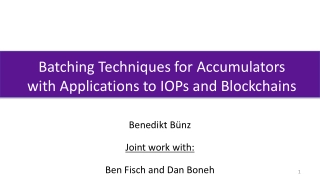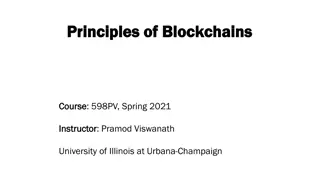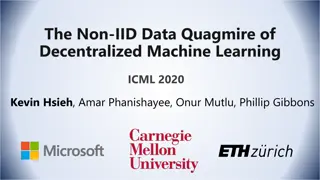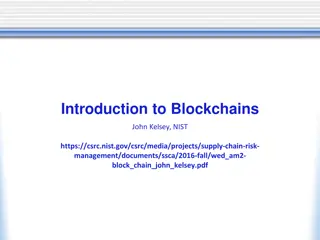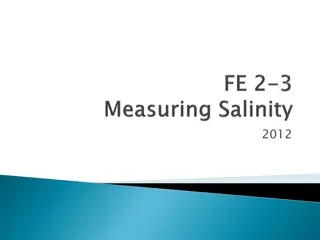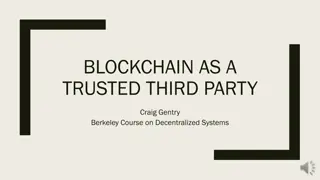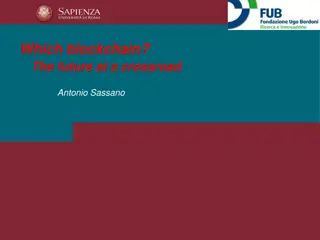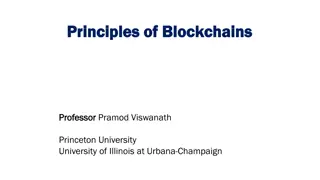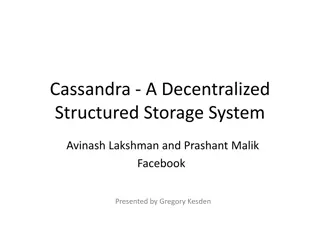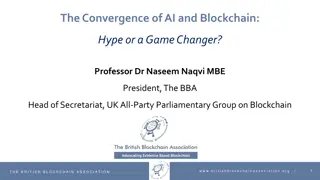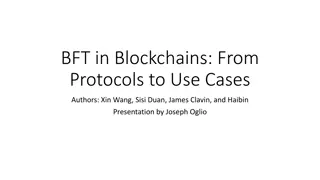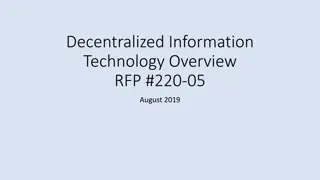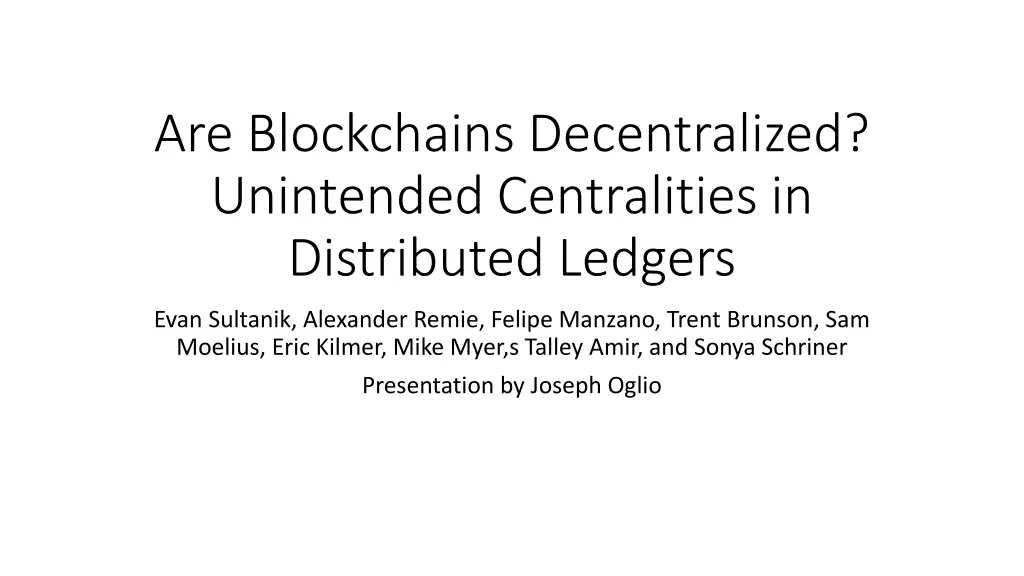
Unintended Centralities in Distributed Ledgers: Blockchain Insights
Explore the unintended centralities in distributed ledgers, uncovering vulnerabilities and risks within blockchain systems. Discover the critical factors affecting decentralization, consensus mechanisms, network topology, and software dependencies that impact the security and integrity of blockchains like Bitcoin and Ethereum.
Download Presentation

Please find below an Image/Link to download the presentation.
The content on the website is provided AS IS for your information and personal use only. It may not be sold, licensed, or shared on other websites without obtaining consent from the author. If you encounter any issues during the download, it is possible that the publisher has removed the file from their server.
You are allowed to download the files provided on this website for personal or commercial use, subject to the condition that they are used lawfully. All files are the property of their respective owners.
The content on the website is provided AS IS for your information and personal use only. It may not be sold, licensed, or shared on other websites without obtaining consent from the author.
E N D
Presentation Transcript
Are Blockchains Decentralized? Unintended Centralities in Distributed Ledgers Evan Sultanik, Alexander Remie, Felipe Manzano, Trent Brunson, Sam Moelius, Eric Kilmer, Mike Myer,s Talley Amir, and Sonya Schriner Presentation by Joseph Oglio
Centrality Authoritative number of bad guys needed to disrupt the system Consensus how centralized is the consensus mechanism (mining pools) Motivational disincentivize malicious behavior Topological how connected is the network Network geographically spread out so ISP can t disrupt the protocol Software does the safety of the ledger depend strongly on the software
Discoveries To use a blockchain one must (a) accept its immutability and trust it is bug free, or (b) permit upgradeable contracts or off-chain code Every widely used blockchain has a privileged set of entities that can modify the semantics of the blockchain to potentially change past transactions The number of entities sufficient to disrupt a blockchain is : four for Bitcoin, two for Ethereum, and less than a dozen for most PoS networks The majority of Bitcoin nodes appear to not participate in mining and nodes face no penalty for dishonesty The standard protocol for coordination within blockchain mining pools, Stratum, is unencrypted and, effectively, unauthenticated When nodes have an out-of-date or incorrect view of the network, this lowers the percentage of the hashrate necessary to execute a standard 51% attack. Moreover, only the nodes operated by mining pools need to be degraded to carry out such an attack
Discoveries There is currently no known way to implement Sybil costs in a permissionless blockchain like Bitcoin or Ethereum without a centralized trusted third party A dense, subnetwork of Bitcoin nodes appears to be largely responsible for reaching consensus most nodes don t contribute to the health of the network Bitcoin traffic is unencrypted any third party on the network route between nodes (e.g., ISPs, Wi-Fi access points, or governments) can observe and choose to drop any messages Of all Bitcoin traffic, 60% traverses just three ISPs Tor is now the largest network provider in Bitcoin, routing traffic for about half of Bitcoin s nodes. Half of these nodes are routed through the Tor network Of Bitcoin s nodes, 21% were running an old version of the Bitcoin Core client that is known to be vulnerable in June of 2021 The Ethereum ecosystem has a significant amount of code reuse: 90% of recently deployed Ethereum smart contracts are at least 56% similar to each other.

